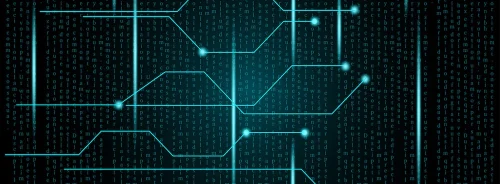Emergency medicine is a field of healthcare that treats illnesses or injuries requiring immediate medical attention, including disaster medicine, critical care medicine or emergency medical services, among many other specialisations. Within this context, technology has exerted a substantial influence alongside forward-thinking practices that radically improve patient outcomes through advanced methodologies. Thus, more efficacious responses in immediate care have been instrumental in advancing the capabilities of response teams in a sector subject to the complex challenges involved in emergency healthcare scenarios. This article provides an introduction primer.
Rapid Responses to Haemorrhage
In situations with heavy bleeding and life-threatening injuries, time is a precious commodity. One example of an intuitive yet vital development is "stop the bleed kits", which contain critical components such as tourniquets, gauzes, medical gloves and trauma shears for treating life-threatening bleeding in emergencies. Thus, in the context of accidents or mass casualty situations, these kits exponentially increase positive outcomes for those undergoing severe haemorrhage while mitigating the risk of exsanguination. Ultimately, the probability of patient survival is markedly improved in the critical timeframes before advanced medical care is obtainable.
Rapid Diagnostic Technologies
In immediate care scenarios, rapid diagnostic tests (RDTs) have been a paradigmatic development, facilitating fast, straightforward, and efficient medical diagnostic tests. Ultimately, they accommodate point-of-care (POC) testing formerly confined to laboratories. For many health professionals on the front line of immediate care, these tests have become vital for rapidly generating a diagnosis in emergency situations through POC ultrasound machines, portable blood analysers and rapid molecular testing equipment. Overall, this expediency in analyses reduces delays, optimises resource utilisation and improves overall efficiency.
The Integration of Telemedicine
Assimilating telemedicine into emergency medicine has notably enhanced operational efficiency in numerous healthcare departments. Healthcare practitioners are facilitated to deliver remote care from a distance for those in urgent need of assessment and expedited intervention. Teleconsultations allow emergency physicians to conduct live collaborations with various specialists to support critical decision-making in exigent circumstances. In addition, telemedicine substantially increases the options for extensive post-discharge follow-up care and monitoring, building more effective care continuity and reducing hospital readmissions.
Artificial Intelligence (AI) in Triage and Decision Support
Artificial intelligence (AI) technologies have arguably entered the zeitgeist of our modern era, radically changing innumerable industries. There are several disciplines where AI has undoubtedly contributed positively towards progress, particularly healthcare; for example, in emergency medicine, AI has boosted triage and decision support systems by utilising sophisticated algorithms to rapidly analyse patient data, such as their vital signs, medical history and symptoms instantaneously. This allows human doctors and nurses to prioritise cases and improve clinical decisions, employing machine learning and predictive analytics to maximise resource allocation and enhance the flow of patients.
Mobile Health Applications
Mobile health applications facilitate the exchange of information between health professionals in the case of a possible health emergency. They are increasingly employed in situations including natural disasters, medical emergencies and terrorist attacks. They present multifarious functionalities, including symptom assessment, first aid guidance and emergency response coordination, improving the rapid assessment and management of medical emergencies. Mobile health platforms enhanced aspects of communication and information sharing between patients and providers, typically through remote monitoring and timely intervention when required.
Simulation and Training Technologies
Advancements in simulation for training contexts have become vital in equipping emergency medical personnel in a miscellany of potential emergency situations, priming them to be more capable and confident in diverse clinical scenarios. Clinical skills, decision-making, and teamwork are all emphasised and, in situations replicated within controlled virtual reality simulations and high-fidelity mannequins to close the divide between theory and practice. A further advantage of simulation-based training is its facilitation of interdisciplinary collaborations and emphasis on continuous learning within emergency medicine units.
Remote Monitoring and Wearable Devices
Assessing individual patients' health status outside formal healthcare environments can be radically enhanced by remote monitoring and wearable devices. Thus, the early detection of conceivable emergencies and proactive intervention are reinforced, typically through wearable ECG monitors, blood pressure cuffs and continuous glucose monitors. These devices generate data in real-time to the interfaces of healthcare professionals to make recommendations for interventions and improve the management of personalised care. A final advantage of these devices is their ability to encourage patients to be more self-aware and to observe treatment plans.
Concluding Notes
This article shows that healthcare is a sector anticipated to be dramatically enhanced by technological innovation. Many of these advancements are already integrated into hospitals and other emergency units, providing efficacy in a context where time and accuracy are critical. The technologies outlined above are only several of the emerging developments that improve positive outcomes for patients. As emergency care continues to adapt and evolve, integrating these technologies and evidence-based practices while establishing pathways for their ethical use will confirm professionals adapt to the constantly shifting demands of quality healthcare.
This article is part of the ICU Management & Practice Point-of-View Programme.





